Continued from page 2
The user-interface
Overall, what Autodesk did with the UI on AutoCAD for the Mac is simultaneously root it in “classic Macintosh” UI principles (for an informed discussion on this matter see: “Viewpoint: The evolution of CAD on Macintosh”, Architosh, 28 Jan 2013) yet modernize it with available functionality and aesthetic look-and-feel. On the far left is a “classic Mac” vertical tool palette, the center is the document work area or canvas, and the far right is the inspector and element property palettes. Autodesk placed the command line and status bar across the bottom and, of course, the program’s menu system is standard Mac fare. There are “simple to remember” keyboard shortcuts for turning the various UI elements on or off (eg: Cmd-1 turns the Tool sets palette on/off). (see image 10)
Some small details in the AutoCAD for Mac 2013 interface worth mentioning include even little things like the following. All working windows (canvas areas) include a simple viewport label menu system which allows you to set or change the overall UI viewport configuration, say from one window to two over one, set each with its own viewport orientation and set each one with its own rendering mode (e.g.: wireframe, shaded, hidden line, etc). Of course other niceties worth mentioning include Autodesk’s ViewCube which we find excellent to utilize.
The “visors” that come up for different tools are also a strong element in the user-interface we enjoyed using. (see images 11 – 13)
Two spaces
AutoCAD is famous for its concept of “model-space” and “paper-space.” Some of you may not be familiar with this concept, depending on your CAD background. It is not entirely unique to AutoCAD or even Autodesk software products. In essence, there is a system for viewing the CAD geometric data within a 3D physical world that is free of reference to the world of printed drawings. This world is the world of the data itself within the CAD software and is called “model-space”, the space where you create your CAD data.
Advertisement
The space in which you create your drawings is called “paper-space” and this world is a place where you place “viewport” views of your 2D or 3D CAD data that exists in “model-space.” To produce and create drawings or sheets (same thing) you utilize “viewports” (think looking through a camera at 2/3D cartesian CAD data to create views into the “model-space.”
A Modeling Tool
While AutoCAD is famous as the world’s most popular CAD drafting software, it has long been a 3D CAD modeling program as well. Ever since the invention of the very popular SketchUp, a dedicated conceptual modeling tool, the world of 3D CAD and modeling software has been bi-furcated into two distinct directions: the previously dominant direction of the industrial-grade advanced modeling package (of which formZ and Rhino 3D call home) and the new populist direction of the pro-sumer grade conceptual modeling package (of which SketchUp helped popularize and today symbolizes mass-adoption, relative ease-of-use and low cost.).
Today’s modeling tools still array themselves into either “dedicated” modeling packages or CAD/CAM/BIM packages but within both there has been a concerted effort by the more industrial-grade packages to come down-market to the level of the pro-sumer’s toolset and provide direct-modeling in easier to use commands.
AutoCAD 2013 is an industrial-grade 2/3D CAD package, whether for Mac or Windows. (see images 14 – 15). And the tool’s modeling toolset arsenal is deep. At the same time, it offers users pro-sumer level simplicity and direction in several of its tools, most notably its PressPull contextually sensitive tool mentioned above. (see images 01 – 02).
AutoCAD 2013 utilizes an Autodesk-developed modeling kernel known as Autodesk Shape Manager that descends from Spatial’s ACIS modeling kernel. The geometry engine under the hood is deep and what is offered to the user includes all of the following: Solids modeling, Surface modeling and Mesh modeling. For architects using AutoCAD for modeling they will likely stick with Solids for the vast majority of their work. However, as Rob Maguire, Product Manager, AutoCAD for Mac, told us back in 2010 (see, “Autocad’s Fateful Return to the Mac–The Full Story,” Architosh, 17 Dec 2010) industrial designers are now an important segment on the Mac platform. For these users AutoCAD’s abilities with Surface modeling and Mesh modeling matter greatly, often with the end goal being a class-A NURBS based form.
Next page: A Rendering Tool

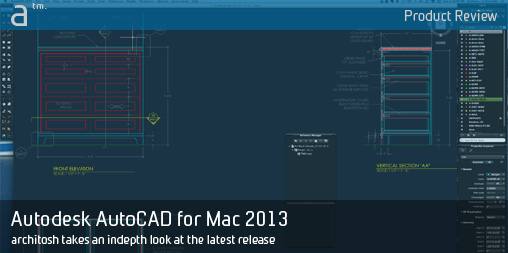

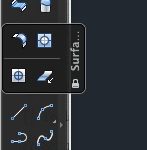
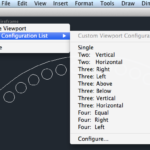

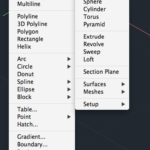
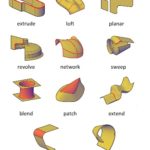


Reader Comments
Comments for this story are closed